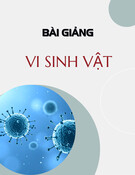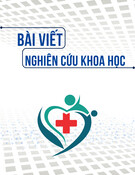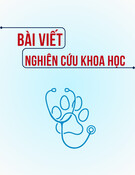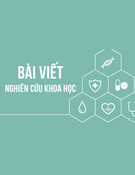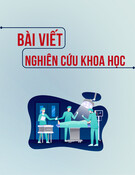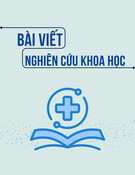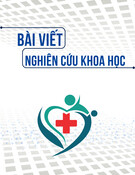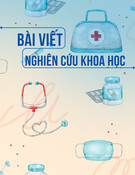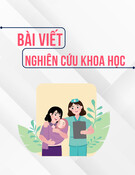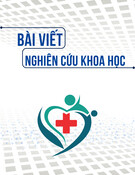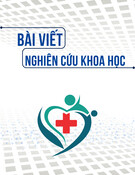
HUE JOURNAL OF MEDICINE AND PHARMACY ISSN 3030-4318; eISSN: 3030-4326HUE JOURNAL OF MEDICINE AND PHARMACY ISSN 3030-4318; eISSN: 3030-4326
186 187
Hue Journal of Medicine and Pharmacy, Volume 15, No.2/2025 Hue Journal of Medicine and Pharmacy, Volume 15, No.2/2025
*Corresponding author: Dang Thi Anh Thu. Email: dtathu@huemed-univ.edu.vn
Received: 11/2/2025; Accepted: 15/4/2025; Published: 28/4/2025
DOI: 10.34071/jmp.2025.2.26
Awareness regarding self-prevention and response to heatwaves
among the residents in several wards and communes in Thua Thien
Hue province
Nguyen Thanh Gia1, Hoang Nguyen Thanh Dat1, Nguyen Van Hiep1, Tran Binh Thang1,
Le Dinh Duong1, Nguyen Minh Tu2, Dang Thi Anh Thu1*
(1) Faculty of Public Health, University of Medicine and Pharmacy, Hue University
(2) Office for Undergraduate Academic Training, University of Medicine and Pharmacy, Hue University
Abstract
Background: Heatwaves pose a threat to public health in Vietnam, and unprecedented heatwaves have
been recorded in Thua Thien Hue province over recent years. Objective: This study aimed to examine the
knowledge, attitudes, and practices (KAP) regarding self-protection and response to heatwaves among
residents in some Thua Thien Hue province communes and investigate their associated factors. Materials
and methods: A cross-sectional study involving 500 participants was conducted in March 2024. Multivariate
logistic regression analysis was utilized to identify the associated factors. Results: Our findings indicated
that the prevalence of heat-related illnesses was 24.2%, while chronic diseases accounted for 41.6%. The
proportions of residents demonstrating good knowledge, attitudes, and practices regarding self-protection
and responses to heatwaves were 92.0%, 61.2%, and 62.2%, respectively. Factors associated with knowledge
regarding prevention and responses to heatwaves included age group, educational background, heat-related
illnesses, chronic diseases, nature of work, primary cooling methods, and information sources. Attitudes
were influenced by profession, area of residence, financial family status, and knowledge. Factors associated
with practices included age group, educational background, area of residence, chronic diseases, nature of
work, primary cooling methods, information sources, knowledge, and attitudes (p<0.05). Conclusion: A high
proportion of participants demonstrated good knowledge. However, attitudes and practices regarding heat
prevention measures were relatively low. Our findings could help reframe and communicate Thua Thien
Hue’s heat wave plans in the light of climate change.
Keywords: Knowledge; attitude; practice; heatwave.
1. INTRODUCTION
Climate change is causing serious impacts,
particularly on human health, through factors such
as air pollution, infectious diseases, and heat-related
illnesses. [1]. It is predicted that the frequency and
duration of heatwaves will increase in the future,
leading to adverse health effects for billions of
vulnerable people and potentially impacting the
majority of the population in the coming decades
[2, 3]. Vulnerable groups, including the elderly,
children, pregnant women, and those with chronic
conditions such as diabetes, cardiovascular disease,
and neurological disorders, will be particularly
susceptible to heat-related illness [4, 5].
During the summer of 2023, Vietnam recorded
nearly 100 temperature records, with provinces
from Thanh Hoa to Thua Thien Hue experiencing
temperatures 1 - 1.5°C above average. Consequently,
prolonged heatwaves have become a significant
public health concern [6]. Thua Thien Hue has a
tropical monsoon climate, where the dry season
is influenced by the hot and dry south-westerly
monsoon (Lao wind), with air temperatures
frequently exceeding 35°C and potentially lasting
for several days [7, 8]. Currently, the impact of
climate change is making heatwaves in the province
increasingly unpredictable and potentially causing
serious health consequences for residents.
Awareness of risks and adaptive behaviour are
important factors in reducing the health impacts
of climate change. Some studies on prevention
and response to heatwaves have been conducted
in various countries worldwide [9]. Studies on
knowledge, attitudes, and practices regarding
heatwaves have mostly been carried out in
developed countries, with relatively few studies
done in developing nations [10]. Although there have
been such studies in Vietnam, no study has been
conducted in Thua Thien Hue province until now. This
study aimed to examine the knowledge, attitudes,
and practices (KAP) regarding self-protection and
response to heatwaves among residents in some

HUE JOURNAL OF MEDICINE AND PHARMACY ISSN 3030-4318; eISSN: 3030-4326HUE JOURNAL OF MEDICINE AND PHARMACY ISSN 3030-4318; eISSN: 3030-4326
188 189
Hue Journal of Medicine and Pharmacy, Volume 15, No.2/2025 Hue Journal of Medicine and Pharmacy, Volume 15, No.2/2025
Thua Thien Hue province communes and investigate
their associated factors.
2. MATERIALS AND METHODS
2.1. Participants
The subjects were involved in our study with the
following criteria: (1) residents aged 18 and over, (2)
permanent residency in Thua Thien Hue province,
and (3) agreed to participate in the study. Those who
were absent during the study or those who did not
have sufficient time to answer the questionnaire.
Residents who are physically, mentally, or cognitively
impaired, which affects their ability to complete the
survey, were excluded.
2.2. Time and place
Data collection was conducted in March 2024.
The study was conducted in one ward (Kim Long
ward in Hue city) and one commune (Thuy Thanh
commune in Huong Thuy town) in Thua Thien Hue
province.
2.3. Study Design
The study design was a cross-sectional study.
2.4. Sample Size
The sample size was calculated using the formula
as follows.
Where:
n: the minimum required sample size for the
study
α: the significance level (α = 0.05)
Z_(1-α/2): 1.96, the Z value obtained from the Z
table at α = 0.05.
d: the desired margin of error, selected as d =
0.05.
p: As the p value could not be found in similar
previous studies, p=0.5 was chosen to achieve the
largest sample size.
Based on this formula, the minimum sample size
calculated is 384. In fact, we involved 500 individuals
in our study.
2.5. Sampling Method
A multi-stage cluster sampling method was
employed, detailed as follows.
Stage 1: Selecting one commune and one ward
from the nine administrative units under Thua
Thien Hue province using random sampling: Kim
Long ward in Hue City and Thuy Thanh commune in
Huong Thuy town.
Stage 2: Three groups are chosen randomly (by
drawing lots) from 13 groups (groups 8, 9, and 10
from Kim Long ward) and two from 9 hamlets (Lang
Xa Bau hamlet, Thanh Toan hamlet). A total of five
groups/hamlets were selected for the study sample.
Stage 3: In each group/hamlet, a list of residents
aged 18 and above was compiled (based on the
local population management records). Sampling
was conducted based on this list until the requisite
sample size was achieved.
2.6. Study variables
General characteristics of the research subjects:
Age group, gender (male/female), educational
background, marital status (single/married/
other), profession, area of residence, and financial
family status (poor/near-poor, average or above).
Personal health status of the research subjects:
Suffering from heat-related illnesses, chronic
diseases, family history of heat-related illnesses
(yes/no), working outdoors (yes/no), duration of
outdoor work (under 4 hours/from 4-8 hours/more
than 8 hours), methods of cooling (use/no use air
conditioning) and sources of information accessed
regarding prevention and response to heatwaves
(Family members/Friends Neighbors/Television
newspapers and radio /Internet/Books, magazines,
leaflets/Media personnel). In the analysis of factors
associated with KAP, sources of information were
divided into 3 groups included community, media,
and both.
Knowledge related to self-prevention and
response to heatwaves: This includes 20 questions,
with each correct answer scoring 1 point, resulting
in a total score ranging from 0 to 20 points. Subjects
demonstrate good knowledge when achieving ≥ 75%
of the total score. Knowledge assessment: Good
knowledge: ≥ 15 points; Not good knowledge: < 15
points.
Attitude towards the ability to self-prevent and
respond to heatwaves: Attitude assessment using a
Likert scale: Comprising 16 items, with a total score
ranging from 16 to 80 points. Individuals achieve
a good attitude when their responses reach ≥ 75%
of the total score. The assessment of attitudes was
as follows: Good attitude: ≥ 60 points; Not good
attitude: < 60 points.
Practices related to self-prevention and
response to heatwaves: The practice questions
include 9 items, with a total score ranging from 9
to 36 points. Subjects demonstrate good practice
when achieving ≥ 75% of the total score. Practice
assessment: Good practice: ≥ 27 points; Not good
practice: < 27 points.
2.7. Method of data collection
A development questionnaire was used
based on previous related studies [11, 12]. After

HUE JOURNAL OF MEDICINE AND PHARMACY ISSN 3030-4318; eISSN: 3030-4326HUE JOURNAL OF MEDICINE AND PHARMACY ISSN 3030-4318; eISSN: 3030-4326
188 189
Hue Journal of Medicine and Pharmacy, Volume 15, No.2/2025 Hue Journal of Medicine and Pharmacy, Volume 15, No.2/2025
developing the questionnaire, we conducted a
pilot survey involving 30 subjects to test the logic
and relevance of each item in the questionnaire by
calculating the Cronbach’s alpha coefficient, aiming
for an acceptable level of >0.7. Subsequently, we
reviewed and revised the questionnaire to ensure it
was appropriate and understandable for residents.
Once the questionnaire was finalized, it was used to
train all data collectors, standardize the interview
methods, and complete the survey forms.
The data collection process includes investigators
randomly selecting households from the local
population management list to be part of the study
sample. They interviewed all individuals aged 18 and
older within those households. After completing
an interview with one household, the investigator
proceeded to interview neighboring households.
If the subject of the study was not home, that
household would be skipped.
2.8. Statistical Analysis
Data collection and analysis were performed
using Epidata software version 3.1 and SPSS
version 20.0. Descriptive statistics for the variables
included quantity (n) and percentage (%). From
the Chi-square test, variables showing statistically
significant relationships (p<0.05) were chosen for
the multivariate logistic regression model to examine
these relationships. Findings were reported as
odds ratios (OR), 95% confidence intervals (CI), and
p-values.
2.9. Ethics statement
The study received approval from the Ethics
Committee in Biomedical Research at Hue University
of Medicine and Pharmacy (No: H2024/025 dated
January 30, 2024) and obtained consent to conduct
research at the study sites from the governmental
authorities of wards and communes in Thua Thien
Hue Province.
3. RESULTS
3.1. General characteristics
Table 1. General characteristics of research subjects (n=500)
Characteristics Frequency (n) Percentage (%)
Gender Male
200
40.0
Female
300
60.0
(Average ± SD: 40.7 ± 15.6)
Age group
18 - 35 220 44.0
36 - 60 221 44.2
≥60 59 11.8
Education
background
Lower secondary school or below 129 25.8
Upper secondary school 371 74.2
Marital Status Married
349
69.8
Other
151
30.2
Famer 51 10.2
Civil servant 65 13.0
Student 64 12.8
Profession
Housewife 31 6.2
Business 98 19.6
Retired 28 5.6
Employee 88 17.6
General labor 64 12.8
Other 11 2.2
Financial family
status
Poor/Near-poor
84
16.8
Average or above
416
83.2
Among the 500 subjects studied, females comprised almost two-thirds. The age bracket of 36-60
accounted for 44.2% (mean age 40.7 ± 15.6), with the highest educational attainment being university at
43.4%. Furthermore, 69.8% were married, and most of the participants reported an average income or higher.

HUE JOURNAL OF MEDICINE AND PHARMACY ISSN 3030-4318; eISSN: 3030-4326HUE JOURNAL OF MEDICINE AND PHARMACY ISSN 3030-4318; eISSN: 3030-4326
190 191
Hue Journal of Medicine and Pharmacy, Volume 15, No.2/2025 Hue Journal of Medicine and Pharmacy, Volume 15, No.2/2025
3.2. Health status and information accessibility of the research subjects
Table 2. Health status and information accessibility of the research subjects (n=500)
Characteristics Frequency (n) Percentage (%)
Heat-related illness Have a disease 121 24.2
No disease 379 75.8
Chronic diseases Have a disease 208 41.6
No disease 292 58.4
The family has someone
with heat-related illness
Yes 158 31.6
No 342 68.4
Sources of information for
prevention and response to
heatwave occurrences.
Family members 381 76.2
Friends 289 57.8
Neighbors 281 56.2
Television, newspapers, and radio 380 76.0
Internet 284 56.8
Books, magazines, leaflets 131 26.2
Media personnel 52 10.4
In the study, 24.2% of participants experienced heat-related illnesses. The prevalence of chronic diseases
was notably high at 41.6%. The primary sources of information were family members (76.2%) and television/
radio (76.0%).
3.3. Work characteristics and cooling method of the research object
Table 3. Work characteristics and cooling method of the research object (n=500)
Characteristics Frequency (n) Percentage (%)
Outdoor work Yes 225 45.0
No 275 55.0
Primary cooling method No air conditioning 249 49.8
Air conditioning 251 50.2
45.0% of respondents work outdoors. Air conditioning was the preferred cooling method for 251
respondents (50.2%).
3.4. Knowledge, attitudes, and practices regarding self-prevention and response to heatwaves
Table 4. Knowledge, attitudes, and practices regarding self-prevention and response to heatwaves
(n=500)
Frequency (n) Percentage (%)
Knowledge
Good 460 92.0
Not good 40 8.0
Attitude
Good 306 61.2
Not good 194 38.8
Practice
Good 311 62.2
Not good 189 37.8
Out of the 500 surveyed individuals, 92.0% demonstrated good knowledge; however, their attitudes and
practices concerning heatwave prevention and response were notably low, at 61.2% and 62.2%, respectively.

HUE JOURNAL OF MEDICINE AND PHARMACY ISSN 3030-4318; eISSN: 3030-4326HUE JOURNAL OF MEDICINE AND PHARMACY ISSN 3030-4318; eISSN: 3030-4326
190 191
Hue Journal of Medicine and Pharmacy, Volume 15, No.2/2025 Hue Journal of Medicine and Pharmacy, Volume 15, No.2/2025
3.5. Factors related to knowledge, attitude, and practice about the ability to self-protect and respond
to heatwaves
Table 3.5. Factors related to knowledge regarding the ability to self-protect and respond to heatwaves
(n=500)
Variables OR 95% CI p
Age group
18 - 35 3.97 1.65 - 9.54 0.002
36 - 60 2.75 1.21 - 6.25 0.016
≥ 60 1
Education background Lower secondary or below 1
Upper secondary or above 4.03 2.09 - 7.80 < 0.001
Heat-related illness Have a disease 1
No disease 2.00 1.02 - 3.94 0.044
Chronic diseases Have a disease 1
No disease 2.25 1.16 - 4.35 0.016
Outdoor work Yes 1
No 2.41 1.23 - 4.74 0.011
Cooling method No use of air conditioning 1
Use air conditioning 6.46 2.66 - 15.68 < 0.001
Source of information
Community 1
Media 4.44 1.38 - 14.28 0.012
Both 6.49 3.14 - 13.42 < 0.001
Research indicates that factors such as age, educational background, history of heat-related illnesses,
chronic conditions, outdoor employment, cooling strategies, and information sources significantly influence
awareness of heatwave prevention and response (p<0.05). Younger people demonstrate greater knowledge;
individuals with at least a secondary education possess knowledge that is 4.03 times higher than those
with lower secondary education. Those without prior heat-related illnesses have knowledge levels twice as
high (p=0.044), while individuals free of chronic diseases exhibit knowledge 2.25 times greater (p=0.016).
Additionally, those who do not engage in outdoor work show increased awareness (p=0.011). Insights gained
from people and television also play a role in boosting knowledge.
Table 6. Factors associated with attitudes towards self-protection and response to heatwaves (n=500)
Variables OR 95% CI p
Profession
Stable income 1
No income 1.41 0.79 - 2.50 0.247
Unstable income 1.82 1.14 - 2.91 0.012
Area of residence Urban 1
Rural 1.83 1.25 - 2.68 0.002
Financial family status Poor/Near-poor 1
Above average 1.74 1.08 - 2.78 0.022
Knowledge Not good 1
Good 2.05 1.07 - 3.92 0.031
Factors such as profession, place of residence, financial family status, and general knowledge affect
attitudes toward heat prevention and response (p<0.05). People residing in rural areas show attitudes that
are 1.83 times more favorable than those in urban locations. Additionally, individuals with an average or
higher income and a solid understanding demonstrate more positive attitudes (p<0.05).

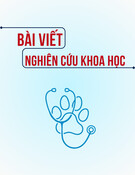
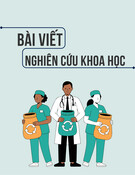
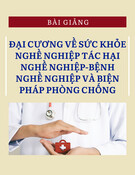

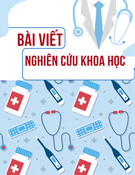
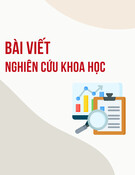
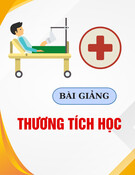



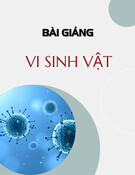
![Bài giảng Vi sinh vật: Đại cương về miễn dịch và ứng dụng [chuẩn nhất]](https://cdn.tailieu.vn/images/document/thumbnail/2025/20251124/royalnguyen223@gmail.com/135x160/49791764038504.jpg)
